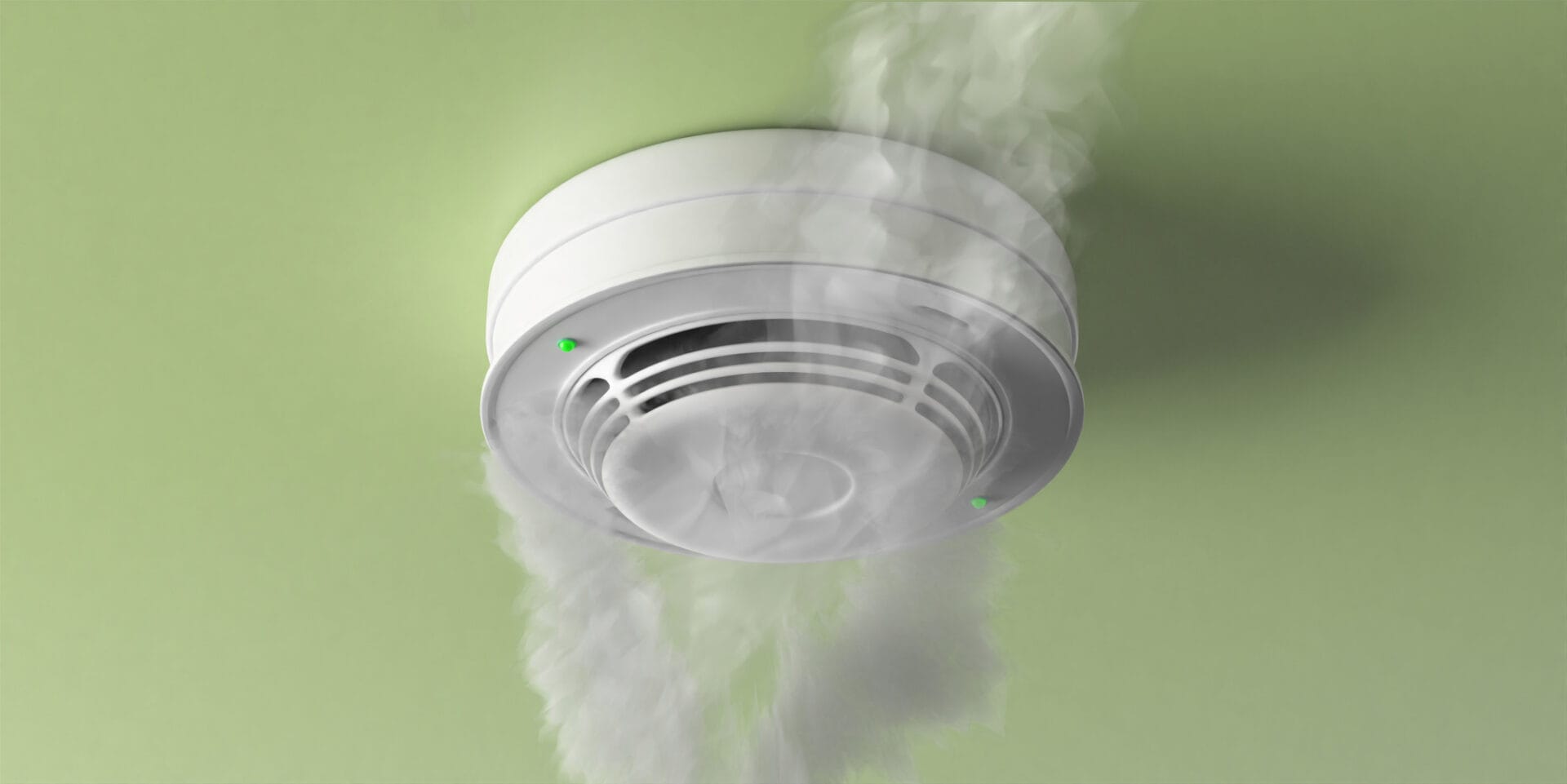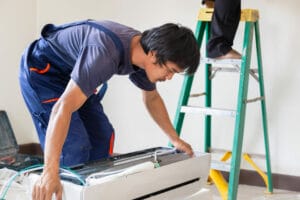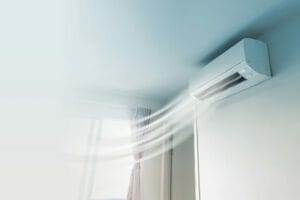Your HVAC system could unknowingly be a source of carbon monoxide (CO), posing a hidden danger. When it’s in heating mode, burning fuel can create CO, especially if there’s a crack in the heat exchanger or if ventilation is poor. Symptoms of CO exposure, like headaches, dizziness, and nausea, can be easily mistaken for the flu, making it a silent threat. Ensuring your HVAC system is regularly maintained and installing CO detectors are key steps to protect yourself. Keep in mind, blocked vents or improper installation can also spike CO levels. Discover how to keep your home safe as we explore more on this subject.
Understanding HVAC Systems
To grasp the concerns surrounding carbon monoxide in HVAC systems, it’s essential to first understand what HVAC systems are and how they function. HVAC stands for Heating, Ventilation, and Air Conditioning. These systems are your home’s lifeline to comfort, regulating temperature, airflow, and even humidity.
Here’s the deal: they’re not just about pumping cool or warm air into your space. They’re intricately designed to ensure that air circulates properly, keeping your indoor environment not just comfortable but also healthy. By pulling in fresh air from outside, filtering it, and then circulating it throughout your home, HVAC systems play a crucial role.
But, it’s their operation, especially in heating mode, that raises concerns about carbon monoxide, as they burn fuel to generate warmth.
Risks of Carbon Monoxide Poisoning
Carbon monoxide poisoning poses a serious risk when HVAC systems malfunction or aren’t properly maintained. This silent threat, known as the ‘invisible killer,’ can seep into your home without warning, as it’s odorless and colorless.
You’re particularly vulnerable while asleep, when it’s less likely you’ll notice the early symptoms of exposure, such as headaches, dizziness, or nausea. Prolonged exposure can lead to more severe health issues, including unconsciousness, brain damage, or even death.
It’s crucial to ensure your HVAC is in top shape and to install carbon monoxide detectors in key areas around your home. These simple steps can safeguard you and your loved ones from the potential dangers of carbon monoxide poisoning.
Common Faults in HVAC Units
HVAC units often fail due to overlooked maintenance, leading to unsafe levels of carbon monoxide in your home. Common faults include cracked heat exchangers, which can leak this deadly gas. If you’re not changing your filters regularly, airflow becomes restricted, causing the system to work harder and potentially overheat.
Poorly maintained vents and flues are another culprit; they can become blocked and stop venting gases outside properly.
Faulty installation can also lead to CO issues. If the unit isn’t set up correctly, it mightn’t combust fuel efficiently, creating a higher risk of carbon monoxide production.
Lastly, wear and tear over time is inevitable. Components degrade, and without regular checks, you mightn’t catch a problem until it’s too late, endangering your household’s safety.
Preventive Measures for Homeowners
Several simple steps can significantly reduce your home’s risk of carbon monoxide exposure from HVAC units.
First, ensure regular maintenance of your HVAC system. A professional can spot issues like cracked heat exchangers or blocked vents before they become dangerous. Don’t skip annual inspections; they’re crucial for catching problems early.
Secondly, install carbon monoxide detectors on every floor, especially near sleeping areas. These devices provide an early warning if CO levels rise.
Third, keep vents and flues clear of debris. Blocked vents can cause CO to accumulate inside your house.
Lastly, never use portable generators or charcoal grills indoors; they can emit dangerous levels of CO.
Following these steps, you’ll significantly enhance your home’s safety against carbon monoxide poisoning.
Recognizing Symptoms of CO Exposure
Understanding the symptoms of CO exposure is crucial for your safety and that of your family. If you’re feeling dizzy, nauseous, or have a headache that won’t go away, you might be experiencing the early signs of carbon monoxide poisoning.
It doesn’t stop there; you could also notice a tightness in your chest, experience vomiting, or feel confused and disoriented. These symptoms often mimic those of the flu, making it tricky to recognize the danger.
It’s essential to act quickly if you suspect CO exposure. Get to fresh air immediately and seek medical attention. Don’t wait for the symptoms to worsen. Your quick response could make all the difference in preventing serious health issues or even saving lives.
Frequently Asked Questions
How Does Seasonal Weather Impact the Risk of Carbon Monoxide Leakage in HVAC Systems?
Seasonal weather affects your HVAC system’s risk of carbon monoxide leakage.
In colder months, you’re more likely to use heating, increasing the wear and potential for leaks if the system isn’t properly maintained.
Can Installing Carbon Monoxide Detectors Interfere With the Efficiency of HVAC Systems?
No, installing carbon monoxide detectors won’t interfere with your HVAC system’s efficiency.
They’re designed to monitor air quality, not affect airflow or temperature, so you can stay safe without compromising your system’s performance.
Are There Specific Brands or Models of HVAC Systems That Have Been Recalled Due to Risks of Carbon Monoxide Leakage?
Yes, there have been recalls on certain HVAC systems due to risks of carbon monoxide leakage.
You’ll want to check the latest safety notices or recall lists for the most up-to-date information on specific brands or models.
How Does the Age of an HVAC System Influence Its Risk of Emitting Carbon Monoxide?
As your HVAC system ages, its risk of malfunction increases, possibly leading to unsafe emissions.
Regular maintenance is crucial to mitigate this risk, ensuring your system remains safe and operates efficiently throughout its lifespan.
Can Renovations or Changes in Home Layout Impact the Effectiveness of Carbon Monoxide Detectors in Homes With HVAC Systems?
Yes, renovations or changes in your home layout can impact the effectiveness of carbon monoxide detectors.
You’ll need to re-evaluate their placement to ensure they’re still in the best spots to detect any potential leaks.
Conclusion
So, you’ve learned how crucial it’s to keep your HVAC system in check to prevent carbon monoxide poisoning.
Remember, regular maintenance can spot common faults early on. Don’t underestimate the importance of preventive measures to protect your home and loved ones.
And, if you ever suspect CO exposure, recognizing the symptoms can literally save lives.
Stay vigilant, stay safe, and keep your HVAC system in top shape to ensure your home remains a safe haven for everyone inside.



